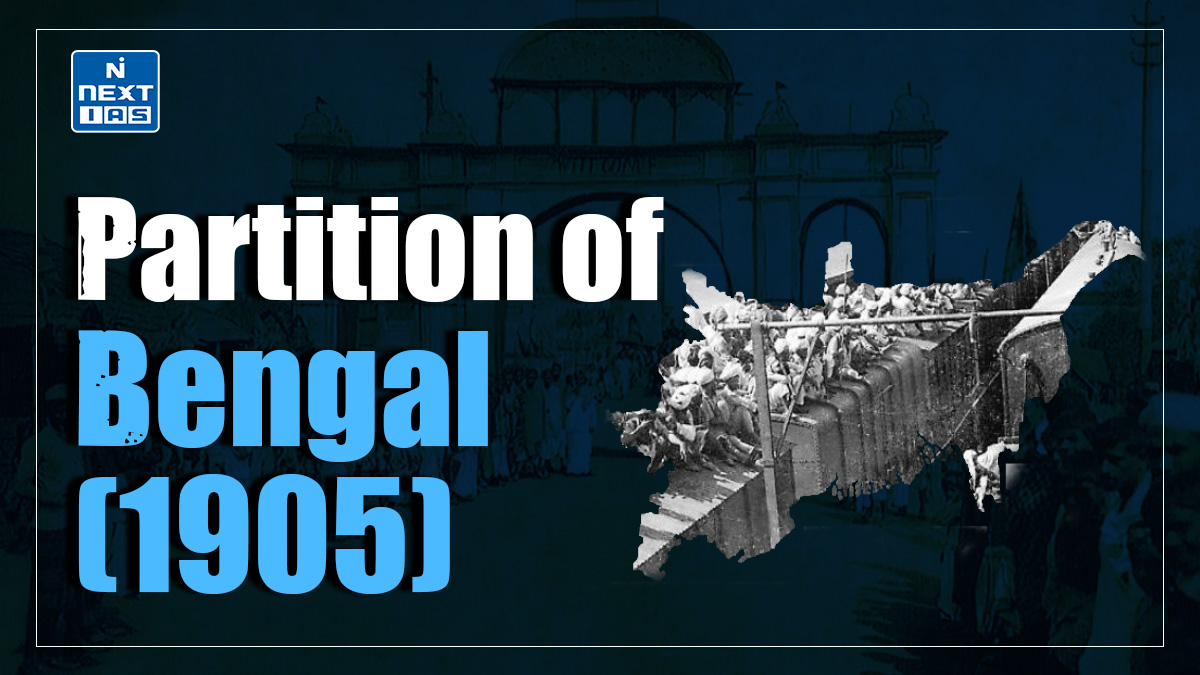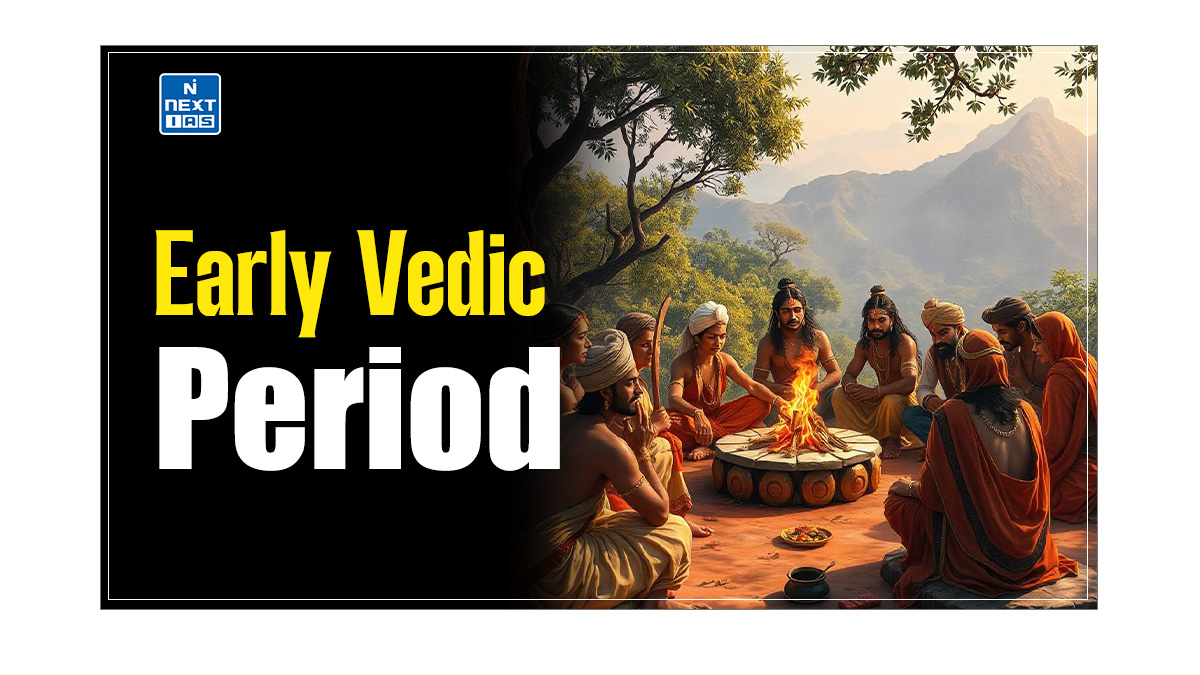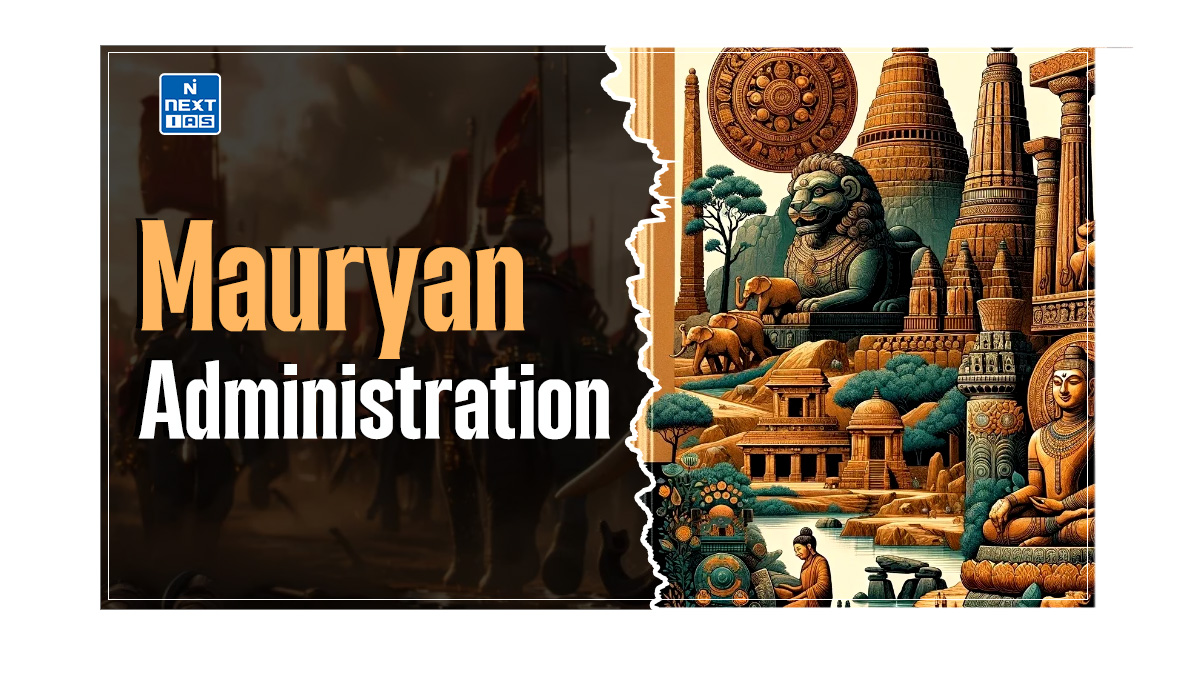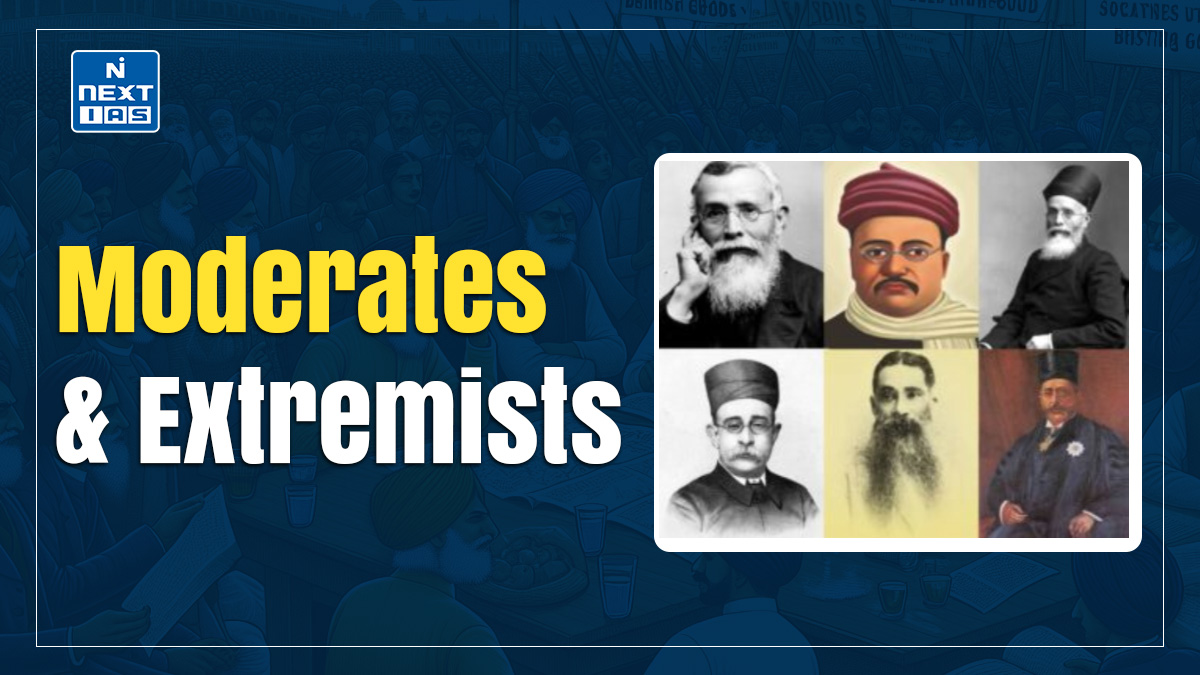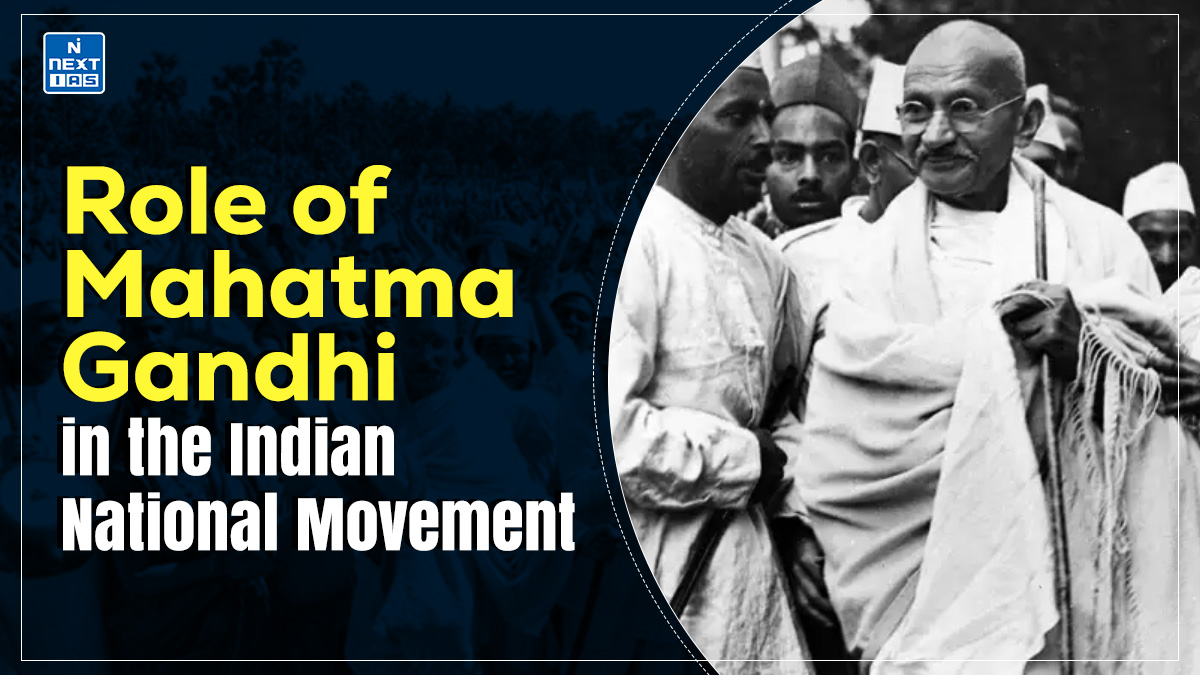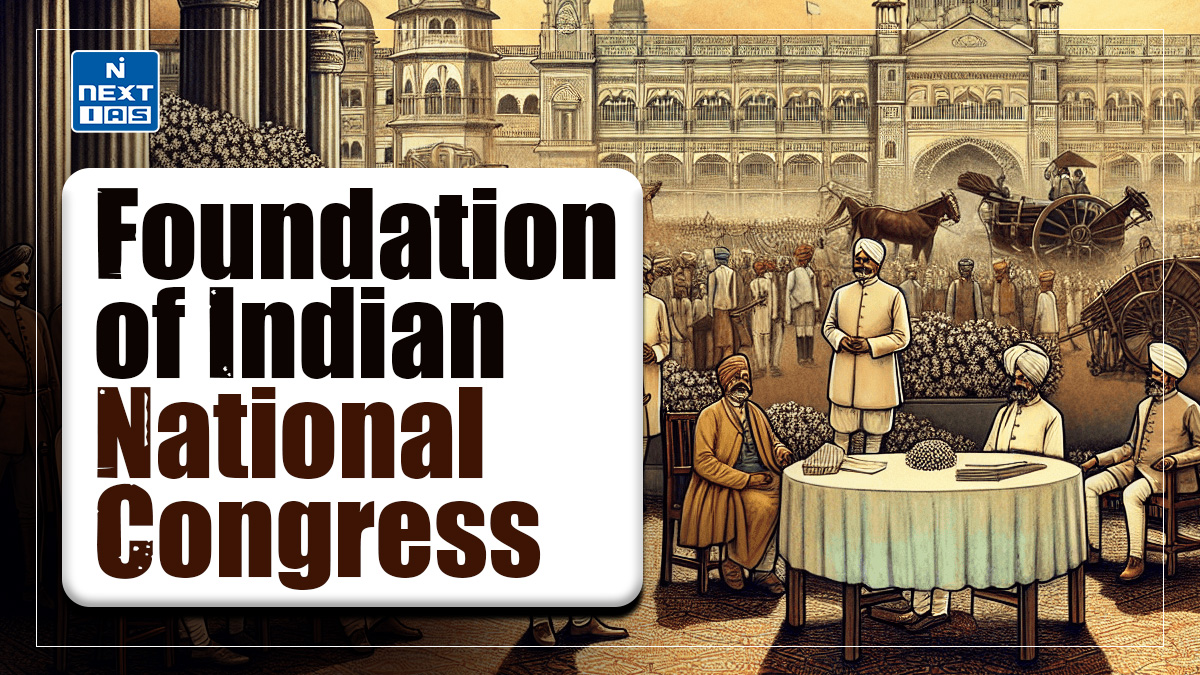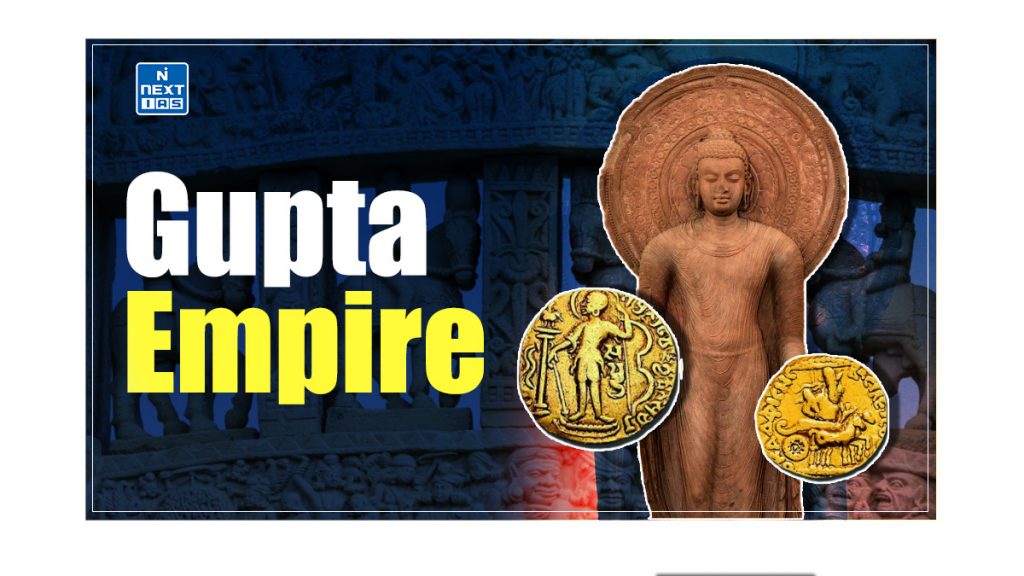
The Gupta Empire, spanning from approximately 320 to 550 CE, is often celebrated as the “Golden Age” of India due to its remarkable advancements in culture, science, and political stability. This era is significant for its flourishing of art, literature, and scientific achievements, which laid the foundation for future developments in Indian history. This article aims to study in detail the key aspects of the Gupta Period, including its political structure, cultural contributions, and scientific advancements and other related aspects.
About Gupta Empire
- The Gupta Empire was an ancient Indian empire founded by Sri Gupta. It stretched across northern, central, and southern parts of India between 320 and 550 CE.
- The Gupta Empire is called the Golden Age of India due to its achievements in the arts, architecture, sciences, religion, and philosophy.
- During this Gupta Empire, India witnessed a renaissance in cultural and intellectual pursuits, with significant contributions from figures like Kalidasa in literature and Aryabhata in science.
- The Gupta rulers fostered an environment of stability and prosperity, facilitating advancements in various fields and leaving a lasting legacy on Indian civilisation.
History of Gupta Empire
- At the beginning of the fourth century A.D., no powerful empire existed in India.
- Both the Satavahanas and the Kushans, who had emerged as major political powers in the Deccan and the North, respectively, after the breakup of the Mauryan Empire, ended in the middle of the third century A.D.
- Several minor powers occupied the political space, and some new ruling families were emerging.
- Against this backdrop, the Guptas, a family of uncertain origins, began to build an empire at the beginning of the fourth century A.D.
- The ancestry and early history of the Gupta family are little known and have naturally given rise to various speculations. Various historians have given different ancestry to the Guptas, like Vaishya, Brahmins, Kshatriyas, Ikshvaku clan etc.
- At the end of the third century A.D., the original kingdom of the Guptas comprised Uttar Pradesh and Bihar. However, Uttar Pradesh seems to have been a more important province for the Guptas than Bihar because early Gupta coins and inscriptions were mainly found in that state.
- As per the inscriptions, Sri Gupta was the founder of the Gupta dynasty, and Ghatotkacha was the next to follow him. Chandragupta was the first independent ruler.

Capital of Gupta Empire
- The Gupta Empire’s capital was Pataliputra, in present-day Patna, Bihar.
- The Gupta Empire was a central political, economic, and cultural hub during the Gupta period.
- Known for its strategic location at the confluence of the Ganges and Son rivers, Pataliputra was a thriving centre of administration and trade, facilitating the growth and prosperity of the Gupta Empire.
- The city’s significance was further enhanced by its role in promoting learning and artistic achievements, which flourished under Gupta rule.
Founder of Gupta Empire
- The founder of the Gupta Empire was Chandragupta I, who ascended to the throne around 320 CE.
- Chandragupta I established the Gupta dynasty and laid the foundation for a golden age in Indian history.
- His reign marked the beginning of significant advancements in various fields, including science, art, and literature, setting the stage for the empire’s expansion and prosperity under his successors.
Rulers of Gupta Empire
- The Gupta Empire was ruled by powerful and influential monarchs who established a golden age in Indian history.
- The rulers of the Gupta Empire were known for their effective governance, military prowess, and patronage of the arts and sciences.
- Their reign marked a period of significant economic prosperity, cultural development, and political stability, which laid the foundation for the flourishing civilisation of the Gupta Empire.
- The contributions of the Gupta Empire were instrumental in shaping the cultural and intellectual landscape of the time.
All the important Gupta Empire rulers have been discussed in detail in the following section.
Chandragupta I (C. 319-335 AD)
- Chandragupta-I was the son of Ghatotkacha and is considered the real founder of the Gupta Empire.
- He married the Lichchhavi princess named Kumara Devi.
- After declaring his independence in Magadha, he enlarged his kingdom with the help of a matrimonial alliance with the Lichchhavis.
- There needs to be concrete evidence to determine the boundaries of his kingdom. However, it is assumed that it covered parts of Bihar, U.P., and Bengal.
- Chandragupta-I is also said to have started a new era from 319 to 320 A.D., which marked the date of his accession. This era came to be known as the Gupta Samvat or Gupta era.
- During the times of his son Samudragupta, the kingdom grew into an empire.
Samudragupta (335-380 AD)
- Chandragupta-I’s son and successor, Samudragupta, enlarged the Gupta kingdom enormously.
- His court poet Harishena wrote a glowing account of his military exploits. In a long inscription engraved at Allahabad, the poet enumerates the peoples and countries that were conquered by Samudragupta.

- Harishena also referred to him as Kaviraj, which meant that he was not only a patron of poetic arts but also a poet himself. Samudragupta also assumed the title of Vikramanka.
- He performed Ashvamedha Yajna, the first Ashvamedha Yajna after Pushyamitra Shunga.
- The places and the countries conquered by Samudragupta can be divided into five groups.
- Samudragupta’s prestige and influence spread even outside India. According to a Chinese source, Samudragupta granted permission to Ceylon king Meghavarman to build a Buddhist monastery at Bodhgaya.
- According to the inscription at Allahabad, Samudragupta never experienced defeat, and in this sense, he is called the Napoleon of India.
- Samudragupta unified the greater part of India under him, and his power was felt in a much larger area.
- Samudragupta laid the military foundations of the Gupta empire, and his successors built upon these foundations.
- Prithivyah Pratham Veer was the title of Samdudragupta.
Chandragupta II (C. 380 – C. 415 CE)
- The reign of Chandragupta II saw the high watermark of the Gupta Empire. He extended the limits of the empire through marriage, alliance, and conquest.
- The Gupta inscriptions mention Chandragupta-II as Samudragupta’s successor.
- However, based on literary sources, some copper coins, and inscriptions, it is suggested that the successor was Samudragupta’s other son, Ramagupta. Visakhadatta’s drama “Devichandraguptam” mentions that Chandragupta-II killed his elder brother Ramagupta and ascended the throne.
- Chandragupta II entered into matrimonial alliances with the Nagas by marrying Princess Kuberanaga, whose daughter Prabhavati was later married to Rudrasena-II of the Vakataka family. Thus, Chandragupta exercised indirect control over the Vakataka kingdom in central India.
| The Story of Devi Chandragupatam |
| – It is mentioned in the drama that Ramagupta was facing defeat at the hands of the Sakas, and to save the kingdom, he had agreed to surrender his wife to the Saka king. – Chandragupta protested and went to the Saka camp disguised as queen Dhruvadevi. He was successful against the Saka king, but as a result of the subsequent hostility with his brother, he killed him and married his wife, Dhruvadevi. – Specific other texts, like the Harsacharita, Kavyamimansa, etc., also refer to this episode. – Some copper coins bearing the name Ramagupta have also been found, and inscriptions on the pedestals of some Jaina images found at Vidisa bear the name Maharaja Ramgupta. – Similarly, Dhruvadevi is described as the mother of Govindagupta (Chandragupta’s son) in a Vaisali seal. |
- Due to his control over the Vakataka kingdom, Chandragupta II conquered western Malwa and Gujarat, which had been under the Sakas’ rule for about four centuries.
- The conquest of Sakas was the most important event of Chandragupta-II’s reign. He destroyed the Saka chieftain Rudrasena III and annexed his kingdom.
- The conquest gave Chandragupta the western sea coast, which was famous for trade and commerce. This contributed to the prosperity of Malwa and its chief city, Ujjain, which seems to have been Chandragupta II’s second capital.
- Chandragupta-II is identified with “King Chandra,” whose exploits are mentioned in the Mehrauli Iron Pillar in the Qutab Minar complex in Delhi.
- According to this inscription, Chandra crossed the Sindhu region of seven rivers and defeated Valhikas (who were identified as Bactria). Some scholars identify Chandragupta-II with the hero of Kalidasa’s work “Raghuvamasa” because Raghu’s exploits appear comparable with those of Chandragupta.
- The Mehrauli inscription also mentions Chandragupta’s victory over enemies from Vanga (Bengal).

- Chandragupta II adopted the title of “Vikramaditya”, which had been first used by a Ujjain ruler in 58 B.C. as a mark of victory over the Sakas.
- The Chinese pilgrim Fa-Hsien (399-414) visited India during Chandragupta’s time and wrote an elaborate account of the people’s lives.
- In his memoirs, he vividly describes the places he visited and the specific social and administrative aspects related to them.
- However, he does not mention the king’s name in his accounts. He speaks highly of the King of Madhya-desa, the region directly ruled by the Gupta monarch in this period.
- Numerous scholars adorned Chandragupta II’s court at Ujjain, collectively known as the Navratnas, or the nine gems.
- Chandragupta II was the first ruler to assume the ‘Param Bhagvat’ title.
Kumaragupta I (415 – 455 AD)
- Chandragupta-II was succeeded by his son Kumaragupta also known as Mahendraditya.
- The Damodarpur Copper Plate inscriptions (433 A.D. and 447 A.D.) refer to him as Maharajadhiraja and show that he appointed the governor (Uparika) of Pundravardhana bhukti (or province) being the biggest administrative division in the empire.
- The last known date of Kumaragupta is from a silver coin dated 455 A.D. (Gupta Era 136).
- The wide area over which his inscriptions are distributed indicates that he ruled over Magadha and Bengal in the east and Gujarat in the west.
- It has been suggested that in the last year of his reign, the Gupta Empire faced a foreign invasion (a Hun invasion), which was checked by the efforts of his son Skandagupta.
- He maintained a cordial relationship with the Vakatakas, established through matrimonial alliances earlier.
- He established the Nalanda University in Bihar.
Skandagupta (455 – 467 AD)
- Skandagupta, who succeeded Kumaragupta-I, was the last powerful Gupta monarch. He assumed the titles of Vikramaditya, Devaraj and Sakapan.
- Skandagupta’s most significant achievement was defeating the Pushyamitras and throwing back the Huns, who had troubled the Gupta Empire since his father’s reign.
- These wars adversely affected the empire’s economy, and the gold coinage of Skandagupta bears testimony to that.
- Skandagupta minted fewer types of gold coins than earlier rulers. He appears to have been the last Gupta ruler to mint silver coins in western India.

- However, the Junagadh inscription of his reign tells us about the public works undertaken during his times.
- The Sudarsana lake (originally built during the Mauryan times) burst due to excessive rains, and his governor, Pamadatta, repaired it.
- This indicates that the state undertook the task of public works.
- The last known date of Skandagupta is 467 A.D. from his silver coins.
Later Guptas
- There is not much clarity on the order of successors of Skandagupta.
- The division of the Gupta Empire into many parts had already begun towards the close of Skandagupta’s reign.
- Thus, an inscription from western Malwa, recorded in Skandagupta’s last year, does not refer to him but to some other rulers beginning with Chandragupta-II.
- Inscriptions mention some of Skandagupta’s successors: Budhagupta, Vainyagupta, Bhanugupta, Narasimhagupta Baladitya, Kumaragupta-II, and Vismigupta.
- It is unlikely they all ruled over a vast empire, as Chandragupta-II and Kumaragupta-I had done earlier.
- The Guptas continued to rule until about 550 A.D., but by then, their power had already become insignificant.
Polity & Administration of Gupta Empire
The polity and administration of the Gupta Empire are as follows:
- Decentralisation and Devolution of Power: The king was advised by a Council of Ministers, responsible for various administrative and military duties.
- A range of ministers and officials managed military and other affairs under the king’s direction.
- The Gupta Empire did not have an overly elaborate bureaucracy due to the effective decentralisation of administrative authority through land grants and friendly Samanta contracts with subdued neighbours.

- Samanta System: The power was devolved to various authorities, giving rise to political hierarchies.
- This is evidenced by the Allahabad Pillar Inscription, which notes that Samudragupta did not kill or destroy his enemies but brought them under suzerainty.
- In the Gupta Empire, a Samanta was a neighbouring subsidiary ruler, a friendly tributary of the Gupta overlords.
- Land Grants: Decentralization was also effected via various land grants, which granted persons and institutions varied immunities and concessions.
- This is one reason that, unlike the Mauryan period, the Gupta Empire had a manageable bureaucracy.

- The Gupta Empire administration was highly centralised. The king was at the top, wielding absolute power but often guided by a council of ministers.
- The Gupta empire was divided into provinces called Bhuktis, each governed by a Uparika or provincial governor and further subdivided into Vishayas (districts) managed by officials called Vishayapatis.
- Local administration involved village assemblies, which were essential in managing local affairs.
- The Guptas maintained a strong bureaucratic system and relied on feudal lords and guilds for regional governance and tax collection. This system contributed to the Gupta empire’s long-lasting stability and prosperity.
Read our detailed article on Gupta Polity and Administration.
Economy of Gupta Empire
The developments in the economy of the Gupta Empire is as follows:
- The economy during the Gupta period was characterised by flourishing trade, a well-functioning guild system, flourishing manufacturing industries, and a high standard of living.
- Of course, agriculture was the main occupation of the people, but other occupations, like commerce and the production of crafts, had become specialized occupations in which different social groups were engaged.
Read our detailed article on Gupta Economy.
Guild System of Gupta Empire
- A guild is an association of artisans or merchants who oversee the practice of their craft in a particular area.
- In Gupta Era, the activities of Guilds increased considerably. Guilds came to acquire considerable autonomous power. These trade guilds were both politically and economically influential.
- Guilds could control one trade in a province and wield economic dominance. Moreover, they became politically influential and also started maintaining militias.
Read our detailed article on Guild System.
Science and Technology of Gupta Empire
The developments in the science and technology of the Gupta Empire are as follows:
- Gupta science and technology witnessed remarkable advancements, marking the period as a golden age of intellectual development in ancient India.
- Scholars like Aryabhata and Varahamihira made significant contributions to mathematics and astronomy, with Aryabhata’s work on zero and the decimal system being particularly influential.
- In medicine, Sushruta and Charaka authored seminal texts on surgery and herbal medicine.
- The period also saw advancements in metallurgy, exemplified by the Iron Pillar of Delhi, which showcased sophisticated metalworking techniques.
- These innovations reflect the Gupta era’s profound impact on scientific and technological progress.
Read our detailed article on Gupta Science & Technology.
Society in Gupta Empire
The developments in the society of the Gupta Empire are as follows:
- Chandragupta II was a patron of art and literature. Samudragupta is represented on his coins playing the veena, and Chandragupta II is credited with maintaining nine luminaries or great scholars in his court.

- In ancient India, art was mainly inspired by religion. Few survivors of non-religious art from ancient India exist. Buddhism gave great impetus to art in the Mauryan and post-Mauryan periods.
- It led to the creation of massive stone pillars, the cutting of beautiful caves and the raising of high stupas or relic towers.
- The stupas appeared as dome-like structures on round bases mainly of stone—numerous images of the Buddha.
Read our detailed article on Gupta Society.
Art and Architecture of Gupta Empire
The developments in the art and architecture of the Gupta Empire are as follows:
- Gupta art and architecture represent a pinnacle of classical Indian artistic expression, characterised by refinement and grandeur.
- Gupta sculpture is renowned for its elegant, graceful forms and intricate detailing, exemplified in works such as the Ajanta and Ellora Caves and the Udayagiri Caves.
- The period is marked by the development of temple architecture, with the emergence of the Nagara style, characterised by its curvilinear shikhara (spire).
- In the Ajanta Caves, Gupta paintings display vibrant colours and intricate narratives of Buddhist Jataka tales.
- The era’s art and architecture reflected the cultural and religious dynamism of the time and laid the foundations for subsequent artistic traditions in India.
Read our detailed article on Gupta Art and Architecture.
Literature of Gupta Empire
The developments in the literature of the Gupta Empire are as follows:
- Gupta literature flourished during the Gupta period (c. 320–550 CE) and is renowned for its contributions to Sanskrit literature and drama.
- Classical Sanskrit literature saw significant development, with notable figures like Kalidasa, who penned masterpieces such as Shakuntala and Meghaduta, showcasing the richness of poetic and dramatic expression.
- The era also saw the creation of important epic and devotional texts, including portions of the Mahabharata and Ramayana, as well as philosophical works by authors like Aryabhata.
- Gupta literature is characterised by its use of sophisticated language, intricate poetic forms, and thematic diversity, reflecting the cultural and intellectual vibrancy of the period.
Read our detailed article on Gupta Literature.
Inscriptions of Gupta Empire
The developments in the literature of the Gupta Empire are as follows:
- Gupta inscriptions are crucial historical sources from the Gupta period (c. 320–550 CE), offering insights into the era’s administration, culture, and religious practices.
- Inscribed on various materials such as stone, copper plates, and pillars, these inscriptions document royal edicts, land grants, and religious dedications.
- Notable examples include the Allahabad Pillar Edict of Samudragupta, which celebrates his military conquests and accomplishments.
- Gupta inscriptions provide valuable information about the Gupta empire’s political and social organization, the spread of Hinduism, and the administrative practices of the Gupta rulers.
Read our detailed article on Gupta Inscriptions.
Decline of Gupta Empire
Towards the end of the 6th century, the Gupta Empire began falling. Some of the salient factors that contributed towards the disintegration of the Gupta empire are as follows:
- Huna Invasions: The successors of Chandragupta II had to face an invasion by the Hunas from Central Asia in the second half of the fifth century A.D.
- Although the Gupta king Skandagupta initially tried effectively to stem the march of the Hunas into India, his successors proved to be weak. They could not cope with the Huna invaders, who excelled in horsemanship and possibly used metal stirrups.
- They could move quickly, and being excellent archers, they seem to have attained considerable success in Iran and India.
- Administrative Weaknesses: The Gupta Empire’s policy in conquered areas was to restore the authority of local chiefs or kings once they had accepted Gupta suzerainty.
- No efforts were made to impose strict and effective control over these regions.
- Hence it was natural that whenever there was a crisis of succession or a weak monarchy within the Gupta empire, these local chiefs would re-establish their independent authority.
- This created a problem for almost every Gupta King who had to reinforce his authority.
- The constant military campaigns were a strain on the state treasury.
- Towards the end of the fifth century A.D. and beginning of sixth century A.D. taking advantage of the weak Gupta emperors, many regional powers reasserted their authority and in due course, declared their independence.
- Rise of the Feudatories: The Gupta empire was further undermined by the increase of the feudatories.
- The governors appointed by the Gupta kings in north Bengal and their feudatories in Samatata or south-east Bengal tended to become independent.
- Issuance of Land Grants: The Gupta Empire may have found it dificult to maintain a large professional army due to the growing practice of land grants for religious and other purposes, which was bound to reduce its revenues.
- Decline in Trade: Their income may have further been affected by the decline of foreign trade.
- The migration of a guild of silk weavers from Gujarat to Malwa in A.D. 473 and their adoption of non-productive professions show that there was little demand for the cloth they produced.
- Besides the reasons quoted above, divisions within the imperial family, concentration of power in the hands of local chiefs or governors, and a loose administrative structure contributed to the disintegration of the Gupta empire.
Importance of Gupta Empire
The importance of the Gupta Empire can be seen as follows:
- The Gupta Empire was one of the world’s largest political and military empires. It was ruled by members of the Gupta dynasty from around 320 to 600 CE and covered most parts of Northern India.
- The peace and prosperity established during the reign of the Gupta rulers enabled the pursuit of scientific and artistic endeavours.
- Significant achievements were made in the arts, literature, and religion. Sanskrit poetry, drama, and art grew in importance, resulting in the Gupta period being known as the classical age of Indian culture and arts.
- Major scientific advances were realized in astronomy, medicine, and mathematics. The decimal system of numerals, which included the concept of zero, was developed.
| The Gupta Dynasty | |
| Chandragupta I | 320-335 AD |
| Samudragupta | 335-375 AD |
| Ramagupta | 375-380 AD |
| Chandragupta Vikramaditya II | 380-413 AD |
| Kumar Gupta Mahendraditya | 415-455 AD |
| Skandagupta | 455-467 AD |
| Later Guptas | |
| – Purugupta, Narasimhagupta, Baladitya, Kumargupta II, Buddhagupta*, Bhanugupta, Harshagupta, Damodargupta, Mahasenagupta. – Buddhagupta was the last emperor of the Guptas who preserved unity. When he passed away, Huns safety entered into Sialkot region and eastern Malwa. | |
Conclusion
The Gupta Empire’s legacy is profound, reflecting a period of exceptional cultural and intellectual achievement that has left an indelible mark on Indian history. From flourishing classical Sanskrit literature and sophisticated artistic expressions to groundbreaking advancements in science and technology, the Gupta Period represents a high watermark in India’s historical and cultural evolution. Despite its eventual decline due to internal weaknesses and external pressures, the impact of the Gupta Empire endures, underscoring its importance as a cornerstone of ancient Indian civilisation.
Frequently Asked Questions (FAQs)
Who was the founder of Gupta empire?
Chandragupta I was the founder of the Gupta Empire.
What is the Gupta Empire best known for?
The Gupta Empire is best known for its “Golden Age of India,” which was marked by significant achievements in the arts, science, mathematics, astronomy, and literature.
Why is the Gupta Empire important?
The Gupta Empire is important for its Golden Age of cultural, scientific, and mathematical advancements, including the concept of zero and significant achievements in literature and art. The Gupta Empire provided political stability, fostering economic growth and intellectual development.
